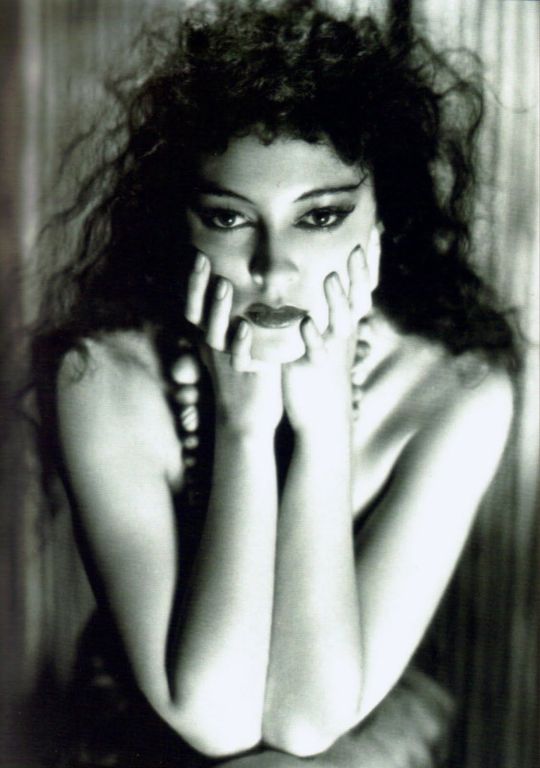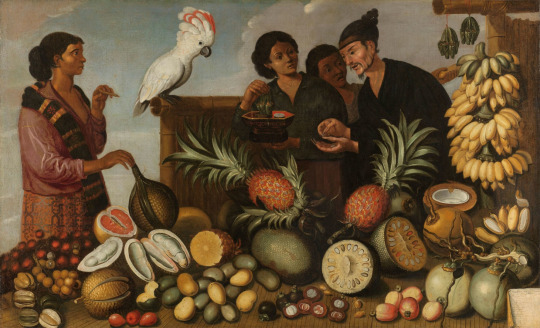#Sarong
Text


blueorca
540 notes
·
View notes
Text

"Seated Hero" (0002)
(More of The Hero's Leisure Series)
0001
#black male beauty#black male body#hero#sexy hunk#male form#male physique#male art#male figure#homoerotic#homo art#sarong#durag#jewelry#ai men#ai generated#ai art community#ai artwork#bodybuilder#muscle hunk#muscle definition#gay ai art#gay art#art direction#fashion illustration
154 notes
·
View notes
Text

Sarong, 1960s.
16 notes
·
View notes
Text

Bob's Girls On The Beach
#lipstick#red lipstick#red lips#stilettos#stiletto shoes#swimsuit#swimwear#sarong#Bob's Girls On The Beach
32 notes
·
View notes
Photo

JB x Jennifer Behr Drop Two - Julia Berolzheimer
13 notes
·
View notes
Text
Waiting for the Rain to End

17 notes
·
View notes
Text

MELL / mellymelly_luv
361 notes
·
View notes
Text

"Seated Hero" (0001)
(The Hero's Leisure Series)
#black male beauty#black male body#hero#sexy hunk#male form#male physique#male art#male figure#homoerotic#homo art#sarong#durag#jewelry#ai men#ai generated#ai art community#ai artwork#bodybuilder#muscle hunk#muscle definition#gay ai art#gay art#art direction#fashion illustration
163 notes
·
View notes
Text

Born on this day 110 years ago: actress Kathleen Burke (5 September 1913 – 9 April 1980). She’s almost solely remembered for the 1932 horror movie Island of Lost Souls (tagline: “The Panther Woman lured men on … only to destroy them body and soul!”). Sporting the kind of heavy black eyeliner that anticipates Siouxsie Sioux or Exene Cervenka, Burke makes a vivid impression as the sarong-clad Lota the Panther Woman. As a publicity stunt, Paramount Pictures held a competition to cast an unknown in the role of Lota. Burke (a dental assistant from Chicago) entered the contest and beat an estimated 60,000 contestants. Her film career was ultimately fleeting. Burke retired from the screen in 1938, returned to obscurity and died in 1980.
#kathleen burke#island of lost souls#horror movies#lobotomy room#morbidly beautiful#panther woman#sarong#exotica#kitsch#old hollywood
34 notes
·
View notes
Text

Local dhole wearing a sarong. Quick doodle.
66 notes
·
View notes
Text

Bob's Girls On The Beach
#lipstick#red lipstick#red lips#stilettos#stiletto shoes#swimsuit#swimwear#sarong#Bob's Girls On The Beach
27 notes
·
View notes
Text

Amazing Sarong for the beach.
#sarongs#sarong wraps#sarong#summer vibes#beach fashion#summer fashion#beach wraps#beachlife#beach babe#swimwear
5 notes
·
View notes
Photo

A Market Stall in Batavia, Andries Beeckman (attributed to), Albert Eckhout (rejected attribution), c. 1640 - c. 1666
The Dutch and Malay inscriptions on the piece of paper in the lower right corner identify this as a Dutch painting of subjects studied on the spot. Most of the fruit varieties are found only in Indonesia, the former Dutch East Indies, and were not exported to Europe at the time. The combination of figures from different countries suggests that the setting is most probably the very cosmopolitan Batavia, modern-day Jakarta.8 A Chinese merchant, recognizable as such from his distinctive goatee, moustache and remarkably long fingernails, is counting coins in a fruit stall set off with bamboo partitions. Standing on the left is a woman wearing a typically Javanese sarong and kebaya and holding a small cigar in one hand while placing a durian upright with the other. A second Javanese woman in the middle is lifting a small bundle of leaf wrappers out of a small Japanese lacquered casket, probably betel leaves. A boy behind her is picking a banana from the bunch hanging on the right. A striking salmon-crested cockatoo (Cacatua moluccensis) is perched on the bamboo screen at the back.
Andries Beeckman went to great lengths to depict the huge diversity of tropical fruit as faithfully as possible, but he was clearly not a professional still-life painter. The different varieties are easily distinguished, but their textures are not convincing. Laid out on the table – some with numbers matching the list on the piece of paper (the latter are given between brackets below) – are, on the far left, from top to bottom, rambutans (Nephelium lappaceum, no. 1), langsats (Lansium domesticum, no. 3) and starfruit (Averrhoa carambola, no. 2). Beside them are a partly cut pomelo (Citrus maxima, no. 4) and durians, one of them sliced (Durio, no. 5). The three small pieces of red fruit at bottom left are water or Malay apples (Syzygium aqueum or Syzygium malaccense, no. 6) or Java apples (Syzygium samarangense), and lying to their right are mangoes (Mangifera indica, no. 7) and pineapples (Ananas comosus, no. 8). Below the two pineapples in the centre are jackfruit, one halved (Artocarpus Heteropyllus, no. 9) and several small mangosteens, some opened (Garcinia mangostana, no. 10). On the right are bananas (no. 11), five coconuts and a halved one (Cocos nucifera), and at the very front cashew apples (Anacardium occidentale). The fruit cut in two in the Japanese casket is probably a sort of lime called a Calamondin orange (Citrofortunella microcarpa).
The Rijksmuseum painting is a reduced version of a canvas from an anonymous series of scenes of foreign peoples and produce that decorated the walls of Schloss Pretzsch an der Elbe in Saxony until 1828 (fig. a).9 In the nineteenth century they were removed, first to Berlin and then to Schloss Schwedt an der Oder in Brandenburg.10 They were seen there in the 1930s by Thomsen, who rather hesitantly attributed them to Albert Eckhout and dated them around the middle of the seventeenth century.11 Schwedt was completely destroyed in the closing days of the Second World War, and all that is left of the works of art are pre-war black-and-white photographs making it clear that the attribution to Eckhout is untenable.12
The connection with the canvas from Schloss Pretzsch also led to this Market Stall in Batavia being wrongly attributed to Eckhout or his circle in the past.13 It is woodenly executed, compositionally clumsy, and is not of the kind of Brazilian subject for which Eckhout is known. Minor differences between the two paintings show that they were not copied after each other but seem to share the same or a similar source. The way in which the fruit and cockatoo are depicted displays a clear resemblance to the only known still life by Andries Beeckman (fig. b), and, interestingly, one of the scenes from the series in Pretzsch castle was definitely based on watercolours by him,14 so the present canvas could also be by Beeckman or someone from his circle.
Very little is known about the picture’s provenance, although there are a few early records of an Indonesian fruit market, and since A Market Stall in Batavia is the only surviving work of that nature there is a great temptation to associate it with those early sources. There is, however, nothing that can be said for certain. Around 1660 Jan Vos wrote an ode about paintings in the collection of Joan Huydecooper, among them an ‘East Indies fruit market’: ‘Who has driven me from the north to the east? / I find myself in the market of the East Indies coast. / Here nature displays her fruit as food for life. / The sight makes my mouth desire the beautiful harvest, / Thus is my stomach now sorely overburdened. / Greedy eyes are not soon satiated’.15 It may well be that the poet was referring to the Rijksmuseum canvas.16 There is a second mention of an ‘East Indies fruit market’ a little later in the collection of burgomaster Mattheus van den Broucke of Dordrecht.17 It is far from obvious that it refers to this Market Stall in Batavia. His picture was one of a series of which the others were described as ‘One ditto, with East Indies animals and fruit’, ‘One ditto, being East Indies lodgings, ‘One ditto’, ‘Three ditto, East Indies women’ and ‘A Moorish woman’.18 It is very possible that the Rijksmuseum painting was also part of a larger ensemble of that kind.
Erlend de Groot, 2022
#hanfu#indonesia#art#sarong#Andries Beeckman#kebaya#懒收巾#jingguan#headwear#dutch painting#A Market Stall in Batavia
76 notes
·
View notes
Text
Happy #WorldAnimalDay! How many different animals can you spot in this fabric menagerie?


Sarong (Kain Lepas), mid-late 19th c.
Javanese (Indonesia, Java, Pekalongan)
Cotton, paint
44 x 84 in. (111.76 x 213.36 cm)
The Metropolitan Museum of Art, New York 30.88.2
#Javanese art#Southeast Asian Art#Asian art#sarong#fabric art#textile art#animal#animals#animals in art#animal holiday#World Animal Day#Metropolitan Museum of art New York#19th century art
16 notes
·
View notes
Photo

Summer To Fall - Julia Berolzheimer
2 notes
·
View notes
